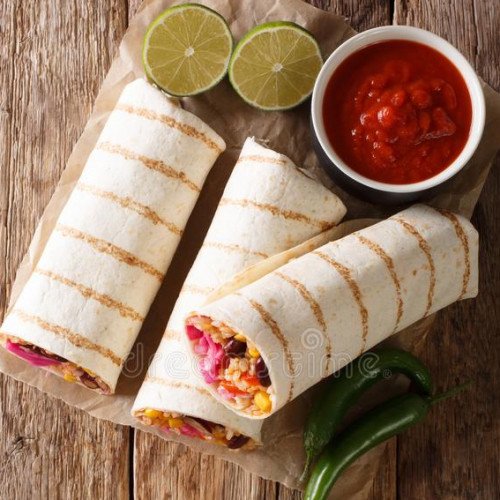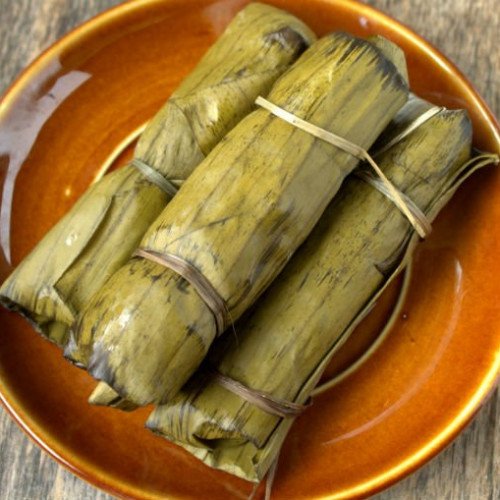Burritos vs Tamales

Burritos
A burrito (English: /bəˈriːtoʊ/, Spanish: [buˈrito] (About this soundlisten))[1] is a dish in Mexican[2] and Tex-Mex cuisine[3] consisting of a flour tortilla wrapped into a sealed cylindrical shape around various ingredients.[4] The tortilla is sometimes lightly grilled or steamed to soften it, make it more pliable, and allow it to adhere to itself when wrapped. Burritos are often eaten by hand, as their tight wrapping keeps the ingredients together. Burritos can also be served "wet", that is to say covered in a savory and spicy sauce, where they would be eaten with a fork and knife. Burritos are filled with a savory filling, most often a meat such as chicken, beef, or pork, and often include a large array of other ingredients such as rice, cooked beans (either whole or refried), vegetables such as lettuce and tomatoes, cheese, and condiments such as salsa, pico de gallo, guacamole, or crema. Burritos are often contrasted with other, similar, dishes such as tacos, in which a small hand-sized tortilla is folded in half around the ingredients rather than wrapped and sealed, or with enchiladas which use masa (maize/corn) tortillas and are covered in a savory sauce, to be eaten with a fork and knife.
Statistics for this Xoptio

Tamales
A tamale or tamal is a traditional Mesoamerican dish, made of masa or dough (starchy, and usually corn-based), which is steamed in a corn husk or banana leaf.[1] The wrapping can either be discarded prior to eating or used as a plate. Tamales can be filled with meats, cheeses, fruits, vegetables, chilies or any preparation according to taste, and both the filling and the cooking liquid may be seasoned. Tamale is an anglicized version of the Spanish word tamal (plural: tamales).[2] Tamal comes from the Nahuatl tamalli.[3] The English tamale is a back-formation of tamales, with English speakers interpreting the -e- as part of the stem, rather than part of the plural suffix -es. Tamales originated in Mesoamerica as early as 8000 to 5000 BC.[1] The preparation of tamales is likely to have spread from the indigenous culture in Mexico and Guatemala to the rest of Latin America. According to archaeologists Karl Taube, William Saturn and David Stuart, tamales may date from the year 100 AD. They found pictorial references in the Mural of San Bartolo, in Petén, Guatemala.[5] The Aztec and Maya civilizations, as well as the Olmec and Toltec before them, used tamales as easily portable food, for hunting trips, and for traveling large distances, as well as supporting their armies.[1] Tamales were also considered sacred as it is the food of the gods. Aztec, Maya, Olmeca, and Tolteca all considered themselves to be people of corn and so tamales played a large part in their rituals and festivals.